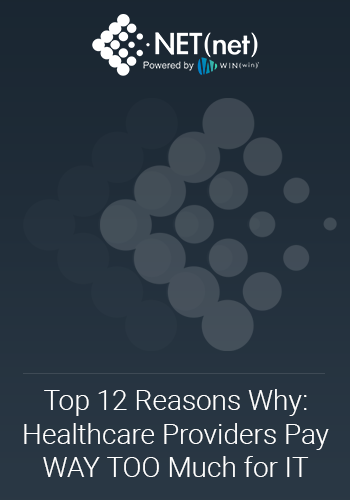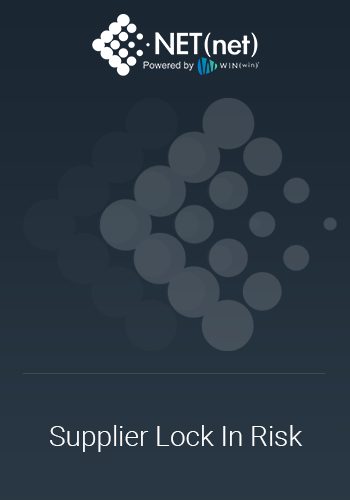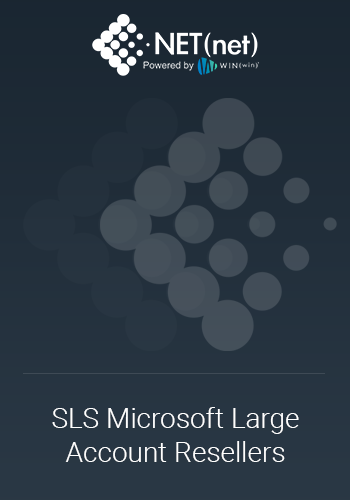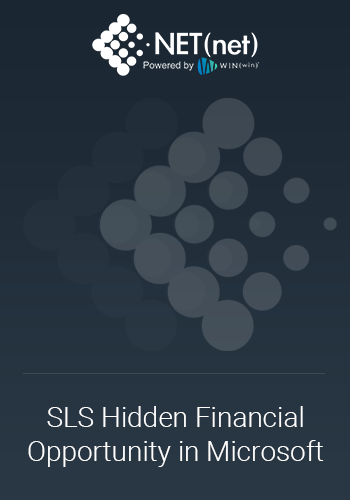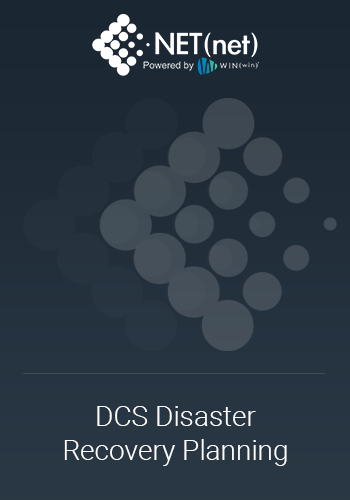Top 5 Examples of Newly Invented Technology Supplier Fees in 2024
Money grab
n. Obtaining money from someone without returning anything of real value. Requiring someone to pay a fee out of purely greedy or opportunistic motives.
Preface
Nearly all clients are seeking greater prosperity in 2024.
While client organizations are still focused on cost reductions to meet the challenges of their new economic and market realities, the pent-up demands of the business are increasingly calling for innovation, automation, and organizational performance improvement.
Digital Transformation has emerged as the #1 Way to Boost Performance and Savings concurrently. Client organizations that are digitally transforming are harvesting greater value by:
- Automating tasks (RPA) to streamline efficiencies
- Unlocking data insights (ML) for better organizational (AI) decision-making
- Empowering flexible (Cloud) solutions for more cost-effective scaling
This drives greater innovation, improved organizational performance, and significant cost savings ranging from 25-30% (depending on industry, scope of transformation, maturity of transformation, and the methodology and execution) while at the same time, lowering risk by diversifying and improving the technology supply chain.
NET(net) is the #1 IT Cost and Value Optimization Provider. In the last 20+ years, NET(net) has shaped over $2 Trillion of investment, captured well over $400 Billion of incremental value for our clients and partners, and has an 85% probability of helping you save between 13-53% on your existing and planned IT costs. Our performance numbers are simply unmatched.
Series Description
The ever-evolving landscape of technology is a double-edged sword for businesses. While it unlocks incredible opportunities for innovation, enhanced operational efficiencies, and improved organizational performance, it also presents challenges when it comes to understanding the over-hyped mysticism of these supposed magical solutions that can solve all your problems, and managing the ever-increasing realm of constantly growing IT costs. In this 4-part blog series, IT Negotiator will be your guide.
We recently wrote about the Top 10 Ways technology suppliers were squeezing their customers for more money in 2024:
But perhaps the most egregious way to extract more value from customers is by inventing entirely new charges that did not previously exist (in exchange for little or no value). Proceeding to then ‘audit’ organizations for their ‘misuse’ of your software after you unilaterally changed the rules is so – next level, but that’s exactly what is happening with our #1 example as you will see.
Along the way, we will continue to equip you with actionable strategies to fight back and ensure you're getting the most value from your technology investments.
In Part 3, we detail the behaviors of 28 major technology suppliers who are engaging in an unprecedented value-grab, riding the wave of cloud migrations, the SaaSification of all software, inflationary tactics and a host of other issues in an attempt to reset your economic reality. If you thought the price of gas or food or utilities was up – just look at software!
Finally, stay tuned to find out who the worst-of-the-worst is in Part 4
Introduction
In the ever-evolving landscape of technology licensing, suppliers are constantly seeking new ways to generate revenue. This can sometimes lead to the introduction of unexpected fees that can significantly impact a customer's budget. Here are five prominent examples of new supplier fees that have emerged in 2024:
Top 5 Examples of Newly Invented Technology Supplier Fees in 2024:
5. Cisco Smart Licensing:
Cisco, a dominant player in networking equipment, introduced Smart Licensing in 2024. This subscription-based model replaces the traditional perpetual licensing approach for software licensing and updates. While perpetual licenses allow customers to own the license indefinitely, Smart Licensing requires ongoing subscriptions. This can lead to higher total software costs over time, especially for organizations with a large installed base of Cisco hardware.
Why Cisco Introduced Smart Licensing:
- Recurring Revenue Model: Cisco desires a more predictable revenue stream through ongoing subscriptions instead of one-time perpetual license sales.
- Centralized License Management: Smart Licensing aims to simplify license management by centralizing it through an online portal, potentially streamlining administration for complex deployments.
Impact on Customers:
- Increased Total Costs: Organizations with a large Cisco footprint might face higher software costs over time due to recurring subscription fees.
- Management Considerations: Smart Licensing requires internet connectivity and potential changes in license management processes, introducing new considerations for some organizations.
4. Adobe Creative Cloud Freemium Model Shift:
Adobe Creative Cloud, a popular suite of creative software tools, has previously offered limited free versions of some applications. However, a recent shift towards a more restrictive freemium model has limited the functionality of these free versions. Users might now encounter watermarks on exported files or have access to a reduced feature set. This change pushes users towards paid subscriptions to unlock the full functionalities of the software, potentially impacting individual creators and small businesses that relied on the free versions for basic tasks that they can no longer complete without paying.
Why Adobe Changed the Freemium Model:
- Driving Paid Subscriptions: By limiting functionality in the free versions, Adobe aims to incentivize users to subscribe to the full Creative Cloud suite for access to all features.
- Monetization of Casual Users: Adobe is clearly seeking to capture revenue from casual users who previously relied on the free versions for basic tasks.
Impact on Customers:
- Limited Functionality for Free Users: Free users now have restricted access to features, potentially hindering creative workflows.
- Subscription Costs for Basic Needs: Users who only require basic functionalities might need to pay for a subscription, impacting their budgets.
VMware, a leader in virtualization software, has traditionally offered core-based licensing for its products. This model allowed customers to license software based on the number of CPU cores in their server environment. However, VMware recently shifted towards a more complex licensing model that combines core count with vRAM (virtual RAM) allocation. This new approach can lead to increased costs for organizations running memory-intensive workloads, even if the core count remains the same. As a result, companies with virtualized environments that utilize significant memory resources need to carefully evaluate their licensing needs under the new structure as it can now contain new added costs that didn’t previously exist.
Why VMware Shifted Their Model:
- Monetization of Increased Virtualization: As virtual machines become more memory-intensive, VMware seeks to capture this increased resource utilization through vRAM-based licensing.
- Alignment with Performance: The combined core and vRAM approach aims to align licensing costs with the actual performance demands of virtual workloads.
Impact on Customers:
- Cost Increases for Memory-Intensive Workloads: Organizations running memory-hungry virtual machines might experience higher licensing costs compared to the previous core-based model.
- Licensing Complexity: The new model requires a more precise understanding of virtual machine resource allocation, potentially increasing licensing management complexity.
2. Microsoft 365 Storage Archiving Fees:
Microsoft 365, a suite of productivity and collaboration tools, has become a staple for many businesses. However, a recent change in Microsoft's pricing structure has introduced additional storage fees for archiving inactive mailbox data within Microsoft 365. Previously, some archiving functionalities might have been included in the base subscription. Now, organizations need to pay extra to access older, inactive emails. This can be a significant cost for businesses with a large volume of historical data or those with long-term retention policies that can cost organizations in ways they did not previously encounter.
Why Microsoft Introduced Them:
- Cost Recovery for Long-Term Storage: Microsoft might be aiming to recover the costs associated with storing and managing inactive mailbox data over extended periods.
- Encouraging Active Data Management: The new fees could encourage users to archive less frequently or migrate older data to more cost-effective storage solutions.
Impact on Customers:
- Budgetary Strain: Companies with large email archives or long-term retention policies now face additional storage costs.
- Data Management Strategies: Organizations may need to re-evaluate their data management strategies to optimize storage utilization and minimize archiving fees.
1. Oracle Java Licensing Fees:
For years, Oracle offered free commercial use licenses for Java, a widely used programming language. However, in a controversial move, Oracle significantly changed its licensing model in 2024. These changes eliminated the free commercial use licenses, forcing businesses to pay for Java licenses even if they weren't using it for commercial purposes. This has caused a significant financial burden for many organizations, particularly those with large codebases reliant on Java. Most organizations never expected to have to pay for this, and if they had known at the time of acquisition that it could later end up costing them, they may have chosen a different solution.
Why Oracle Changed It:
- Recurring Revenue Stream: Oracle likely aimed to establish a recurring revenue stream from Java, a widely used technology. By eliminating free licenses, they force organizations to pay for ongoing maintenance and updates.
- Monetization of Legacy Technology: Java is a mature technology, and Oracle might be seeking new ways to monetize it as development resources shift towards newer platforms.
- Targeting Large Enterprises: The licensing fees likely target large enterprises with significant Java usage, who might be less price-sensitive compared to smaller businesses.
Impact on Customers:
- Increased Costs: Businesses that previously relied on free Java licenses now face additional software licensing expenses.
- Migration Efforts: Some organizations might consider migrating to alternative programming languages to avoid the new fees.
Oracle's Java licensing changes are particularly pernicious because they not only introduce unexpected costs for previously free software, but they also expose customers to potential audits for "misuse" of licenses on technology they acquired in good faith with no reasonable expectation of future payments. This creates a double whammy of financial burden and uncertainty for businesses who may have built their infrastructure around freely available Java.
Conclusion:
These are just a few examples of how technology suppliers are introducing new fees in 2024 that can impact customer spending. It's essential for client organizations to be aware of and stay informed about such changes and carefully and continuously evaluate their licensing needs to optimize costs and avoid unexpected expenses. Negotiating with suppliers, exploring alternative solutions (like open-source software), and constantly monitoring licensing agreements are valuable strategies to help mitigate the impact of these new fees.
Stay Tuned
We hope you enjoyed this blog, outlining the Top 5 example of how technology suppliers are inventing entirely new fees to get more of your money in 2024. Take a look back at some of the tactics they use by reviewing:
- Part 1 of 4: Top 10 Sneaky Tactics Technology Suppliers Use to Jack Up Your Costs
Join us for next month’s installment; where we diagnose the predatory behavior of 28 major technology suppliers and expose how they are leveraging these tactics to separate you from more of your money, and stay until the end as we reveal the Top 5 ‘Absolute Worst’ Technology suppliers of 2024.
- Part 3 of 4: Top 28 Worst Offending Technology Suppliers of 2024
- Part 4 of 4: Top 5 ‘Absolute Worst’ Technology Suppliers of 2024 (surely yours isn’t on the list, right!?)
Call to Action
NET(net) can help you combat these types of value-grabs, and maximize your savings and value on all your IT spend categories, including those with Oracle, Microsoft, VMware, Adobe, and Cisco among many others, so Act Now.
About the Author
Steven C. Zolman is a leading expert in technology investment optimization and the founder, owner, and executive chairman of NET(net), Inc., the world's leading technology investment optimization firm. With over 30 years of industry experience, Mr. Zolman has helped client organizations of all sizes maximize the value of their technology investments by minimizing cost and risk and maximizing the realization of value and benefit.
About NET(net)
Founded in 2002, NET(net) is the world’s leading IT Investment Optimization firm, helping clients find, get, and keep more economic and strategic value in their technology supply chains. Over the last 20 years, NET(net) has influenced trillions of investment, captured hundreds of billions of value, and has helped clients cost and value optimize all major areas of IT Spend, including XaaS, Cloud, Hardware, Software, Services, Healthcare, Outsourcing, Infrastructure, and Telecommunications, among others. NET(net) has the experience you want, demonstrates the expertise that you need, and delivers the performance you demand and deserve. Contact us at info@netnetweb.com, visit us online at www.netnetweb.com, or call us at +1 (616) 546-3100 to see if we can help you capture more value in your IT investments, agreements, deployments, and relationships.
NET(net)’s Website/Blogs/Articles and other content is subject to NET(net)’s legal terms, offered for general information purposes only, and does not constitute legal advice. While NET(net) may offer views and opinions regarding the subject matter, such views and opinions are those of the content authors, are not necessarily reflective of the views of the company and are not intended to malign or disparage any other company or other individual or group.

